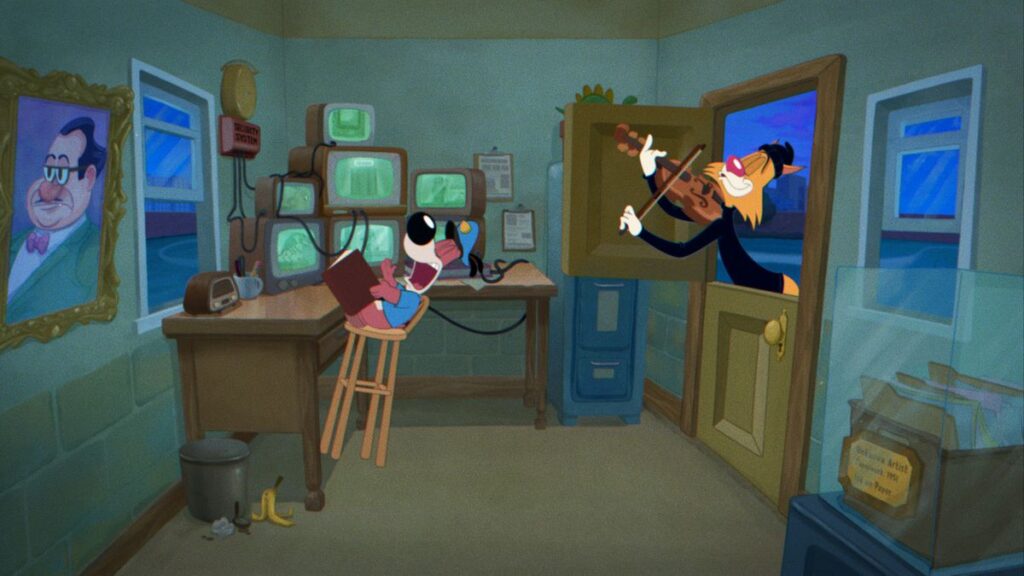[Ed. note: This ranked list is being continually updated as Netflix adds more interactive specials.]
Netflix’s latest project is leaning more into games adaptations than into the actual games it’s been experimenting with over the last five years. But the streaming service keeps adding interactive titles, meant to split the difference between narrative stories and game experiences. The nature of those interactive shows keeps changing, though — while its earliest experiments were simple branching-path narratives for kids, titles like Black Mirror: Bandersnatch and the You vs. Wild series targeted adult audiences instead.
And more recently, Netflix has been moving away from the old Choose Your Own Adventure story style, and more toward the games side, with titles like Cat Burglar and Trivia Quest, which test participants’ knowledge rather than letting them navigate a dynamic narrative. Still, as long as Netflix has its expanding library of interactive offerings, we’ll keep updating this ranked list, which focuses on how interactive each title is, and how much your choices affect what plays out on screen. Two new interactive specials for kids, Jurassic World Camp Cretaceous: Hidden Adventure and Barbie: Epic Road Trip, are the latest additions to the service.
Honorable mention: Headspace: Unwind Your Mind
[Disclosure: Unwind Your Mind is a collaboration between Headspace and Vox Media Studios, a unit of Polygon’s parent company Vox Media.]
This shouldn’t even really count as an interactive experience, but Netflix has labeled it as an Interactive, so we’re mentioning it. The only interactive part of this is picking which Headspace program you want: meditation, relaxation, or sleep. You can customize from there, but it’s just a glorified menu. Useful for what it’s meant for, but not so much for a story experience.
Honorable mention: Trivia Quest
Similarly, Netflix files Trivia Quest under the interactive tag, but it isn’t an interactive story like the entries below. It’s based on a popular app called Trivia Crack, and it’s basically a daily trivia game. The game gives the trivia questions a minimal storyline, as you need to answer correctly in order to free the little characters who have been captured by an evil sword. It’s more interactive than Headspace: Unwind Your Mind, but it’s still designed to be a trivia game first and foremost. There isn’t much wiggle room beyond whether you get answers right or wrong.
21. Cat Burglar
Image: Netflix
The trivia-based game Cat Burglar is actually really fun. There are so many different combinations of scenes that can play out. Viewers play as a cat stealing a priceless painting from a museum and outwitting a guard dog. There are six different segments — entering the museum, distracting the guard, the prehistory exhibit, the ancient artifacts exhibit, the medieval exhibit, and the painting theft itself, and each segment has multiple alternate scenarios. For instance, breaking into the museum could involve vaulting over the gate or digging a tunnel. Which option players get appears to be random, but either way, the success of each segment depends on how accurately and quickly players can answer a series of silly trivia questions.
Problem is, it doesn’t score well by the standards of this ranking. Your specific choices don’t lead to customizable outcomes. Your success at the trivia sections determines whether the cat burglar is successful at the given task. Each trivia section is a randomized category, like “Chess Moves” or “Best Birthday Gifts,” and each one presents three rounds of two answers to pick from (“Good Knight or Bad Bishop,” for instance, and “Surprise Subpoena or Surprise Party”). While not explicitly adult, the trivia questions are tailored for a slightly older audience than the Tom and Jerry-esque aesthetic implies — players will at least need to know what a subpoena is.
If you fail, the cat loses one of three lives and restarts the segment with a different scenario. It’s a different, enjoyable spin on the Netflix interactive, but the storyline doesn’t change based on your input, and you don’t have control over the options.
20. You vs. Wild

Image: Netflix
The original Bear Grylls interactive special is, honestly, really boring. Each episode drops Grylls into a new environment, where his adventures play out like an episode of his show Man vs. Wild, except technically, the viewer gets to choose his survival actions. But almost every choice either ends in instant failure or prompts you to the “correct” path. The series never really feels interactive, and it plays out like a pop quiz in how well-versed audience members are with Grylls’ personal survival preferences. (Yes, he wants to eat bugs — he always wants to eat bugs.)
The premise sounds wacky, and it could have been played for laughs. (A possible grandiose failure might include Grylls freezing into a cartoonish ice cube, for instance.) But the producers take the idea very seriously, which means it’s just a forgettable experience.
19. Buddy Thunderstruck: The Maybe Pile
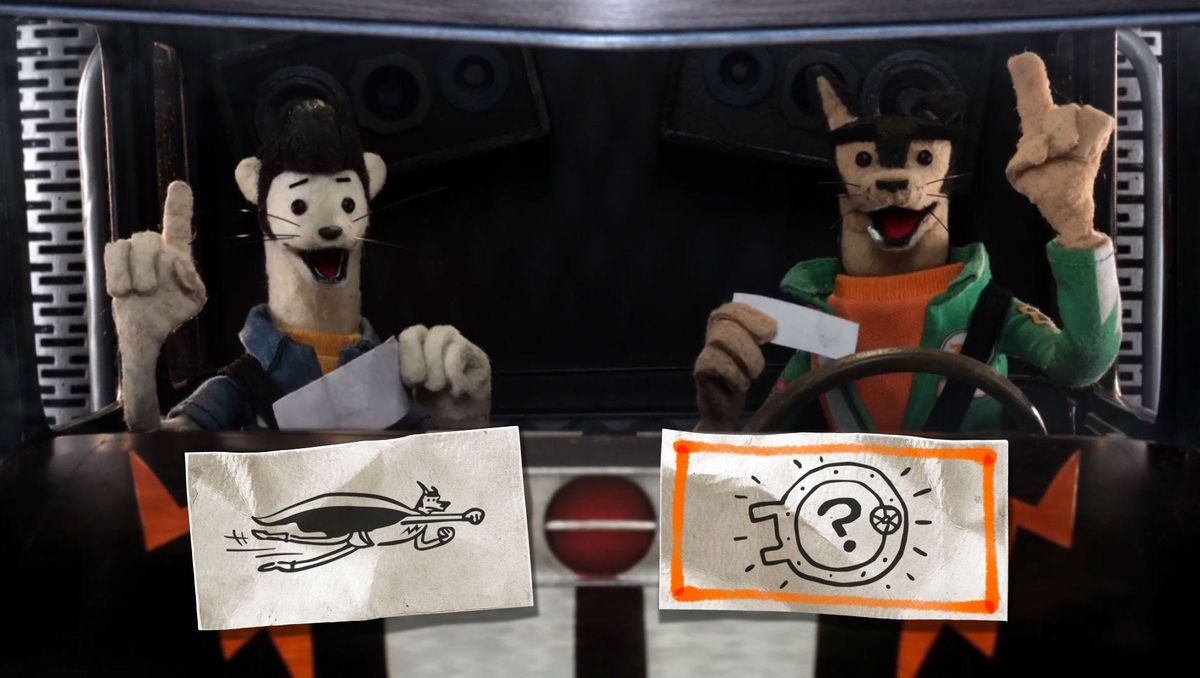
Image: Netflix
Buddy Thunderstruck: The Maybe Pile follows a simple premise. Stunt-driver dog Buddy and his pal Darnell from the stop-motion series Buddy Thunderstruck need to decide what wild thing they want to do, so they consult their bag of “maybe” ideas and pick two. Viewers get to choose which one they try. There’s no overarching narrative whatsoever. Player choice is limited between two ridiculous options — drink three espresso drinks or make a pizza with every possible topping, for instance.
While each fun choice results in a different scene, the one immediately following plays out exactly the same as if you’d picked the other choice. When you choose between trying to get super powers and exploring a sewer, you get different scenes, but both of them toss Buddy and Darnell to the same doctor afterward.
What gives The Maybe Pile a slight uptick, though, is that it’s actually kinda funny, and at the very least more entertaining than You vs. Wild. It’s very much the type of humor that will send a 10-year-old boy rolling on the floor: It’s basically Jackass, but for kids. And hey, sometimes the perfect late-morning pick-me-up is seeing Buddy and Darnell dive into a sewage pit, rejoicing about how they’ve found the Fountain of Youth, then realizing what they’ve done.
18. Battle Kitty
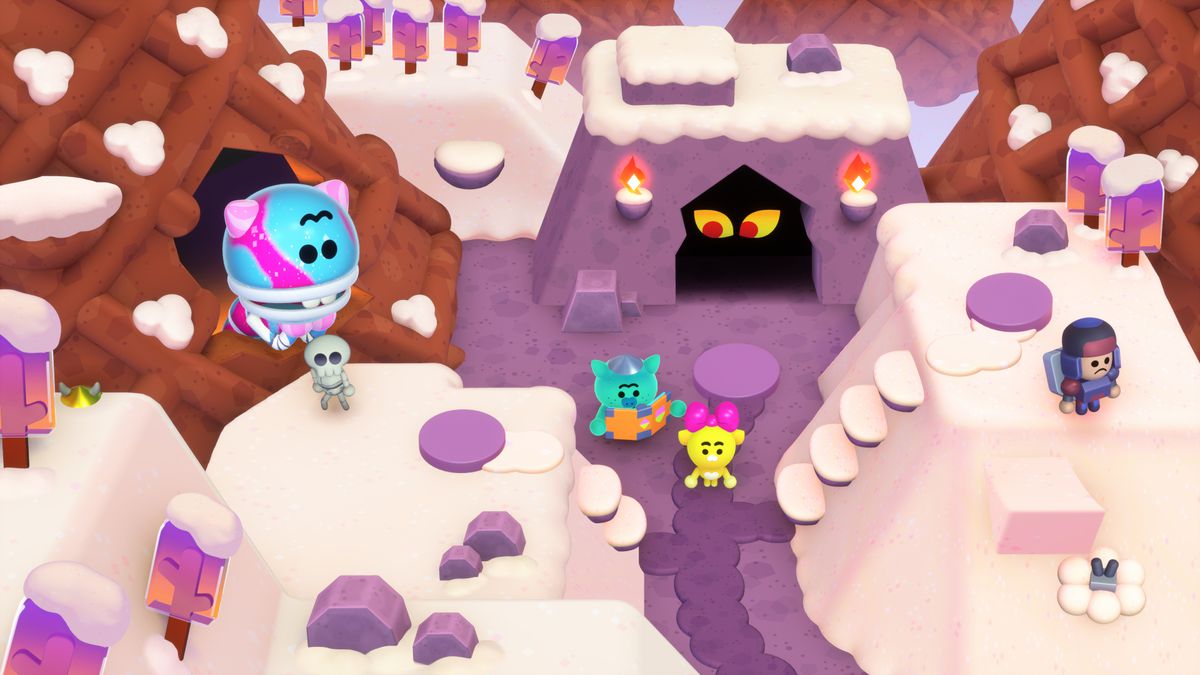
Image: Netflix
This one is a strange case where the show is sophisticated and fun, but your choices don’t affect the outcome. Battle Kitty follows a determined, smart-talking kitty who wants to become the most fearsome warrior on Battle Island. He and his best friend Orc, a fashion-designer orc, meet other warriors and must defeat monsters to advance through the island.
Unlike with other Netflix interactives, the choices are integrated into the visuals on the screen. Each of the eight hourlong episodes presents a map with buttons you can press to watch the different segments play out. The order of the segments doesn’t seem to matter, but you must watch all the longer ones to collect the keys needed to pass the episode. If you try to skip ahead, the show will say you haven’t earned enough keys, and send you back to the correct level. It’s much more sophisticated than other Netflix interactives in terms of how the choices appear.
But this list measures how much your player choices affect the game. And while you can shuffle around some segments, there aren’t many choices, besides what areas of the map to explore, in what order. You can do all of them, or only the bare minimum. You can complete all the videos in one section before moving onto the next one in the available episode, or you can bounce around. But you can’t determine Kitty’s moves or tactics, or decide what weapon he uses against his foes, even when he lists the options on the screen. Battle Kitty feels like watching someone else play a game, as Kitty and Orc jump across the screen and even open up selection menus to choose weapons. The humor is fun, but you’re mostly customizing how you watch a show, not how the story plays out.
17. Kimmy vs. The Reverend

Photo: Netflix
The Unbreakable Kimmy Schmidt interactive special takes place after the events of the series finale, with Kimmy set to marry a handsome prince played by Daniel Radcliffe. But after discovering a mysterious book in her backpack, she suspects that the reverend who kidnapped her and held her in an underground bunker for most of her life may have another bunker full of women somewhere, so she sets off to free them.
Kimmy vs. The Reverend has its funny moments, and to its credit, the scenes and jokes leading up to the choice selection are some of the most entertaining of all the interactive specials. The characters actually riff about the choice selection, instead of just reiterating the options, or staring expectantly at the audience. But the choices themselves are disappointing. Pick the “wrong” one, and the story instantly ends in failure, which isn’t fun. The quick fail is a trend that carries on in some of the other titles, but it feels all the more jarring in Kimmy vs. the Reverend, because the characters call you out on diverting from the sitcom’s characterizations. This one is also longer than most of Netflix’s interactive shows, so getting a “Game Over” really grinds the experience to a halt.
On a more metatextual level, it just seems a little odd that even though you’re supposed to be helping Kimmy find agency and heal from her past, the game basically takes away any agency by forcing certain options on you. The only actual difference in endings comes from a side plot with Kimmy’s friends Titus and Jacqueline.
16. Captain Underpants: Epic Choice-o-Rama
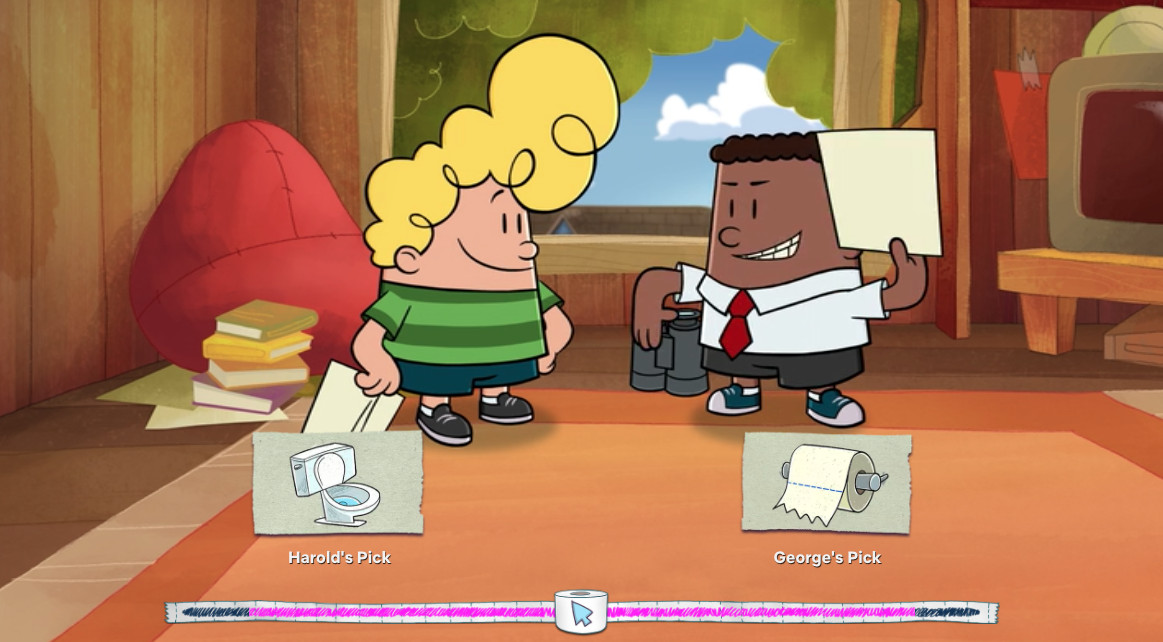
Image: Netflix
Epic Choice-o-Rama features grade-school cartoonists George Beard and Harold Hutchins saving their beloved treehouse from being demolished by the controlling Principal Krupp. This involves appealing to their neighbor, who may or may not be a retired famous action movie star.
The Captain Underpants special has only a few choices that really make any impact. Early on, when making what seems like the first big choice, two of the options just play out hypothetical situations and force you to pick the third. Many of the options have a clear right and wrong — with the wrong one just immediately segueing into the “right” choice. Most of the choices are purely to play a different clip, like when Harold and George argue over which movie to watch. In general, there are just fewer choices between the long, rambling segments. Not a very fun play, unless you’re very into Captain Underpants.
15. The Last Kids on Earth: Happy Apocalypse to You
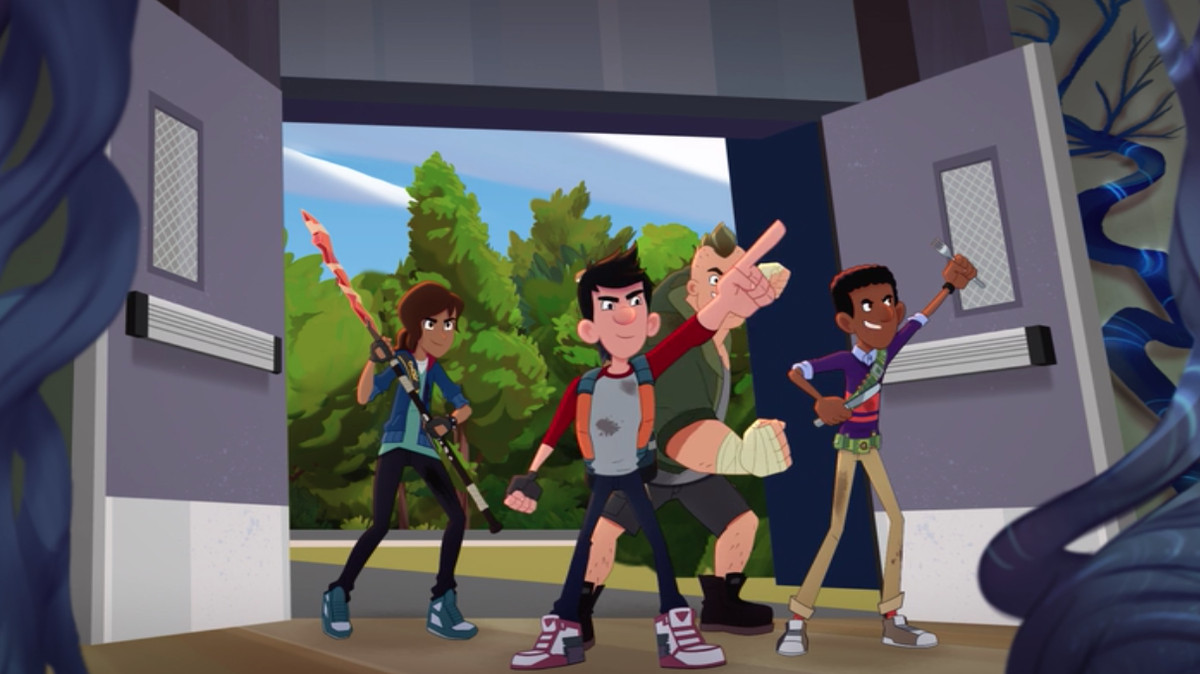
Image: Netflix
Another interactive adventure based on a Netflix cartoon, The Last Kids on Earth: Happy Apocalypse to You follows the characters of Netflix’s post-apocalyptic adventure series. Jack, the plucky leader of the title’s last kids on earth, wants to throw a party for his crush June, so the four protagonists cross the monster-filled wasteland where they live, trying to find necessary party components: cake, balloons, and a nacho-cheese fountain.
There are a few branching choices in Happy Apocalypse to You, but the ultimate ending still pretty much boils down to Instant Failure or Success. Some of the choices do affect specific endgame conditions, but not enough to drastically change the story or its outcome. But for the most part, the choices are at least entertaining and frequent enough to feel engaging, even if some of the options just amount to cute interludes. Make a “wrong” choice here, and you might get an extra fluffy scene, then revert back to the two other choices.
14. Jurassic World Camp Cretaceous: Hidden Adventure
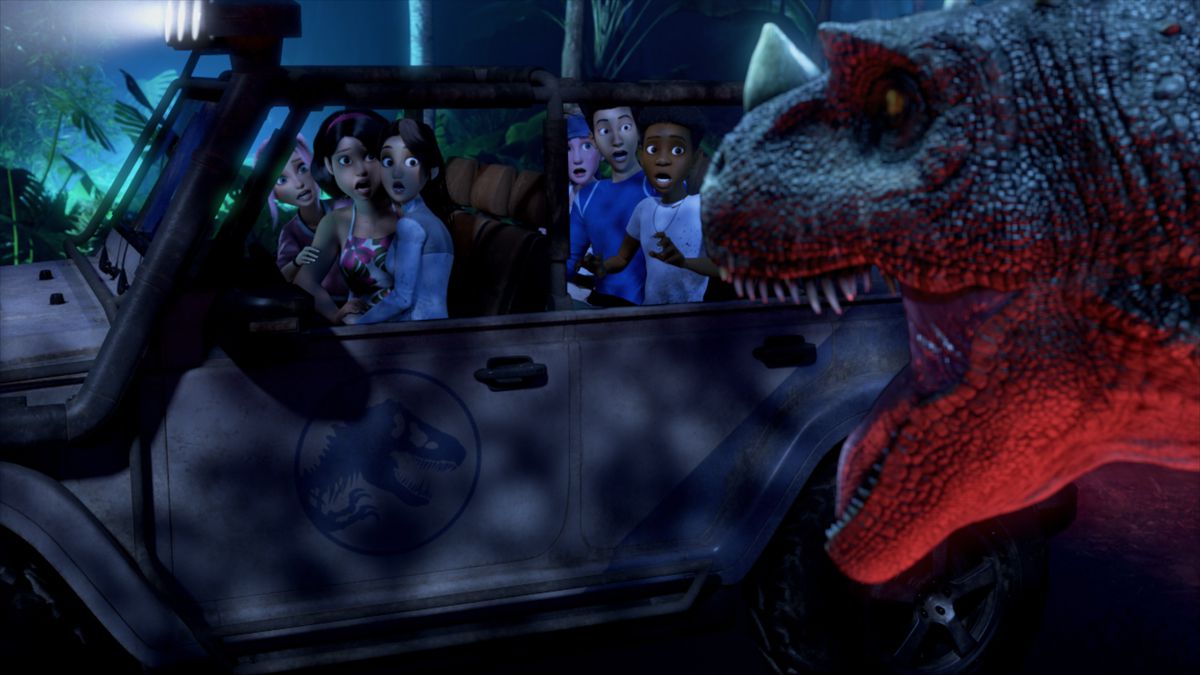
Image: Netflix
Like most other properties with Jurassic World in the title, this one follows a group of people who thought they were getting a cool theme-park adventure, but end up running for their lives from hungry dinosaurs. Jurassic World Camp Cretaceous: Hidden Adventure is based on the animated series Camp Cretaceous, which puts a twist on the typical Jurassic Park/Jurassic World formula by making the stranded group a bunch of teenagers. In the special, these teens are trying to find food and stay alive.
There are a couple of branching paths in Hidden Adventure that toss the kids into different settings as they work toward their ultimate goal of finding food and surviving another day. But within those arcs, most of the choices lead to early endings. (And probably pretty grisly death by dinos, though those aren’t shown.) When a choice doesn’t cut the story short, it doesn’t actually affect anything else down the line. There are also long stretches without viewer choices available, so unless you’re already invested in these characters and their adventures, it’s easy to zone out.
13. Spirit Riding Free: Ride Along Adventure
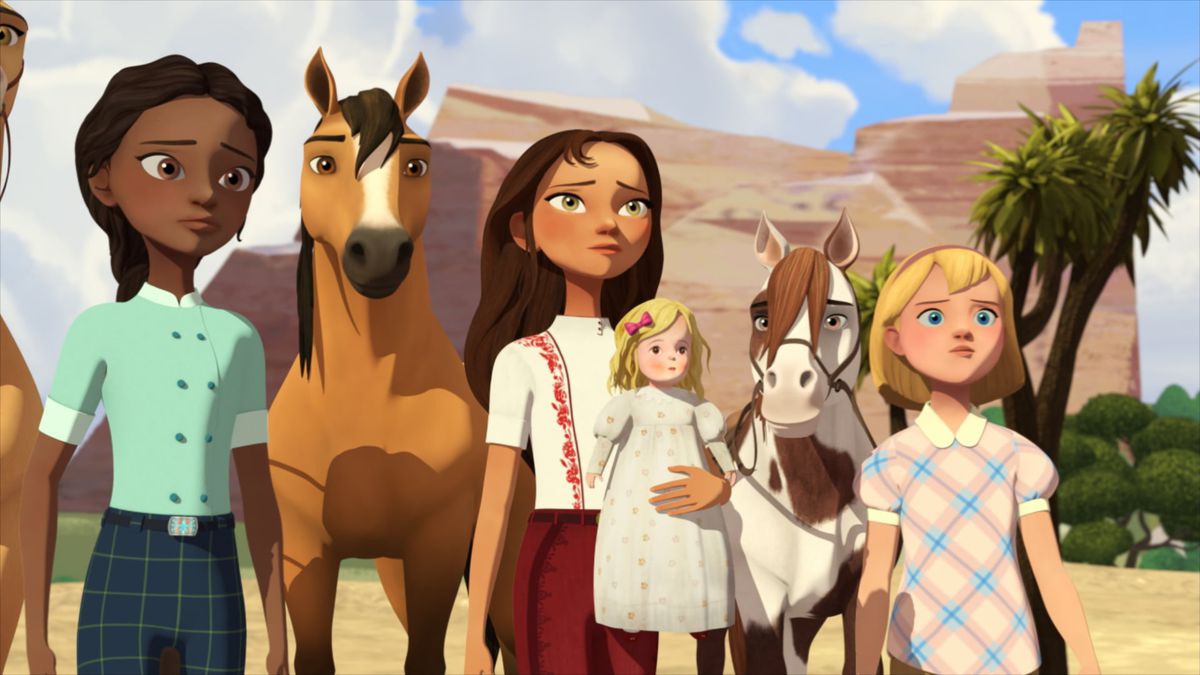
Image: Netfix
Based on Spirit Riding Free, an animated series loosely inspired by the 2002 DreamWorks movie Spirit: Stallion of the Cimarron, Ride Along Adventure follows a plucky group of young teenagers and their horses. This show technically takes place in the Wild West, but you wouldn’t be able to tell from the very modern-looking clothes and attitudes. Three out of four of the horse girls distract the fourth’s horse for the day so the girl can prepare a surprise party for her steed. But what starts off as a simple riding adventure turns into danger, as the horse gets kidnapped and the girls must rescue it.
Spirit Riding Free: Ride Along ultimately falls into the same pitfalls as a few of these lower-ranked specials. If the viewer picks “wrong” choice, the story just pivots seamlessly to the “right” one. For the most part, no matter what you choose, it plays out the same storyline. A few early choices do affect the endgame scenarios, however, which does give this one a leg up on the entries that generally don’t factor in earlier conditions.
12. Animals on the Loose: A You vs. Wild Movie

Image: Netflix
Credit must be given where credit is due — the second Bear Grylls interactive adventure is leagues better than the first. There is now a loose overarching narrative: the electrical fence at a nature preserve has mysteriously shut down, and Bear must fix it and corral some escaped animals. He has a few separate missions to embark on, and the order you pick them in affects the resulting choices. There is a branching path here!
There are a few instant-endgame choices, but they don’t end the entire experience, just the individual mission. The choices are also much more entertaining than the ones in the first You Vs. Wild interactive experience. One sees Bear battling a boa constrictor in the water, while another gives him a choice of luring a lion with meat or offering himself as bait. Some of the choices don’t matter (no matter which grub you eat, for instance, nothing seems to change), but there is enough variability to make for a fun time.
The only downside is the long swaths of time where there is no choice whatsoever, where Bear kinda just does his wilderness thing. You may miss an upcoming choice if you zone out when he muses about coastlines, or hikes around, grunting.
11. Carmen Sandiego: To Steal or Not to Steal

Image: Netflix
The Carmen Sandiego interactive adventure is currently one of the only Carmen Sandiego games readily available to play. After Carmen’s friends Ivy and Zack are kidnapped by the evil organization VILE, the game unfolds with various heists Carmen must undertake to appease VILE.
While definitely one of the most aesthetically pleasing Netflix interactive adventures — the animated series itself has some stunning moments — it jarringly forces viewers down one path at the beginning. The viewer is prompted to rescue Zack and Ivy, or steal for VILE. The former results in an instant endgame. Lots of other choices unfold in frustratingly similar ways: pick a course of action, and you’re seamlessly pushed into the option you didn’t select. There are a few choices with consequences which affect whether the endings are successful. But toward the end of the story, there’s only one clear branch. Carmen will still take on most of the missions, and only the order is shuffled around.
10. Ranveer vs. Wild With Bear Grylls
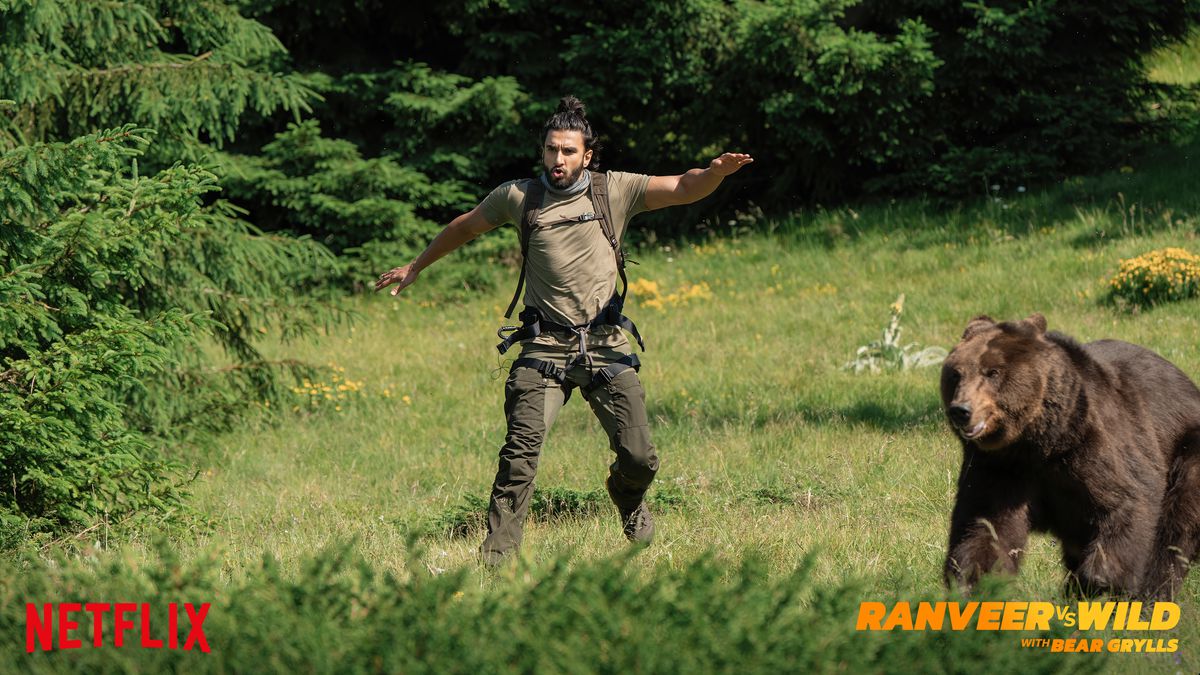
Image: Netflix
In this special, Indian superstar Ranveer Singh joins up with Bear Grylls. In an over-the-top romantic gesture, Singh is on a quest to get a special, rare flower for his wife from the Serbian wilderness. He needs Grylls’ survival skills to help him get it.
The first couple of big choices immediately alter the way the rest of the special plays out — and some choices made really early on also affect what happens toward the end. The only reason Ranveer vs. Wild ranks below the best of the Bear Grylls specials is because depending on whether you initially choose to rappel down a cliff or zipline across it, you may end up without as many huge choices to make.
Actually, if you make certain choices earlier on, you might enter a long stretch without much to do at all, apart from watching Singh talk about how awesome his wife is. (That’s endearing, but not very interactive. Guess there are some things you shouldn’t change!) And a few of the later choices end up just being for flavor, prompting Singh to either talk more about his wife, reflect on who he is as a person, or — in true Bear Grylls fashion — pick between two equally disgusting items to eat.
But if you make the wrong choice at the first branch point, you really feel the consequences of your actions, and you’re prompted with more choices to help navigate your failures. Ranveer vs. Wild is more fun and offers more interactivity than some of the Grylls stories — plus some incentive to pick the “wrong” option in order to explore more choices.
9. You vs. Wild: Out Cold
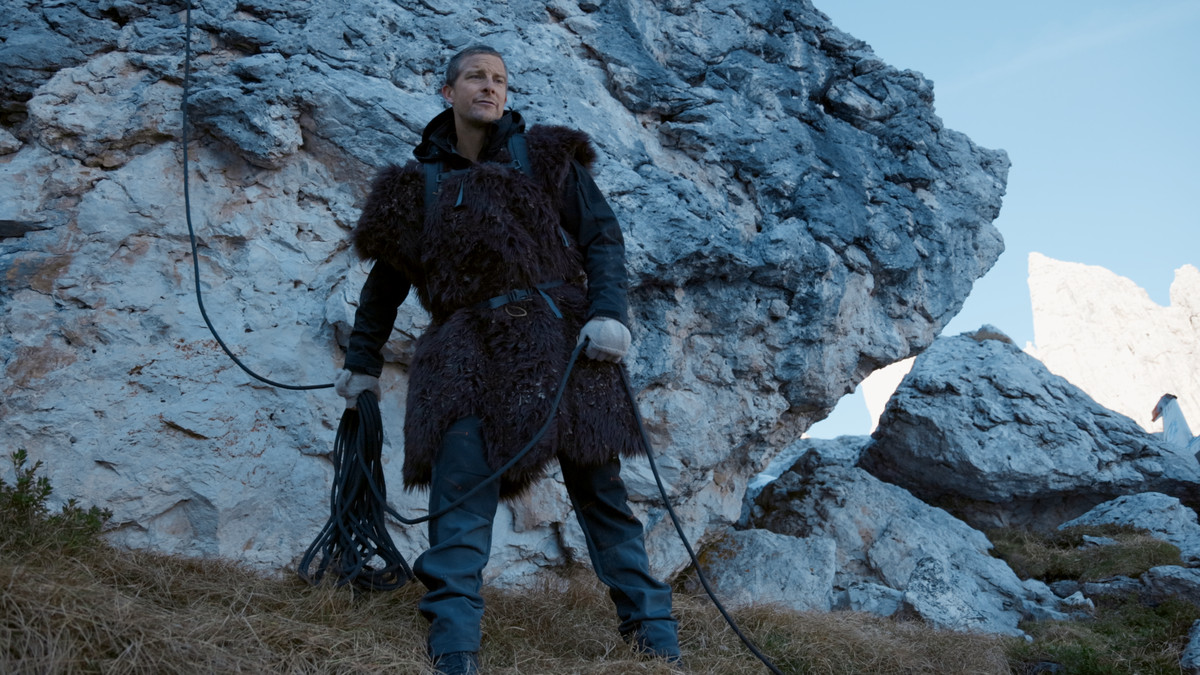
Image: Netflix
This time around, Bear Grylls’ creative team understood the assignment! Each iteration of the You vs. Wild interactive franchise has vastly improved on the last, and the third one is an actual survival adventure, with the viewer’s choices actually making canonical sense. In this interactive special, Grylls wakes up after a plane crash, and he’s forgotten who he is — and all of his survival skills. He has vague hunches about what he’s supposed to do, but he asks the viewer to contribute at each step.
The initial set of choices — seeking food, water, or shelter — do skew into the usual territory, where if you pick the wrong choice, the story immediately segues into the right one, or into endgame. But once Grylls gets his basic survival necessities, he must embark on a rescue mission. Here, the big branching choice happens: Should you trek over the mountains, or go through some spooky tunnels? And that choice isn’t the only major one in the story. Each path offers other, smaller choices — does Bear press through his altitude sickness, or wait it out? Does he mark his path with tiles or knots?
Each of these questions affects the endgame conditions, and determines which extra steps you must choose to get him to safety. Grylls’ acting is incredibly wooden at times, but overall, this interactive is a massive improvement over the first You vs. Wild experience, and it’s an engaging play itself.
8. Puss in Book: Trapped in an Epic Tale
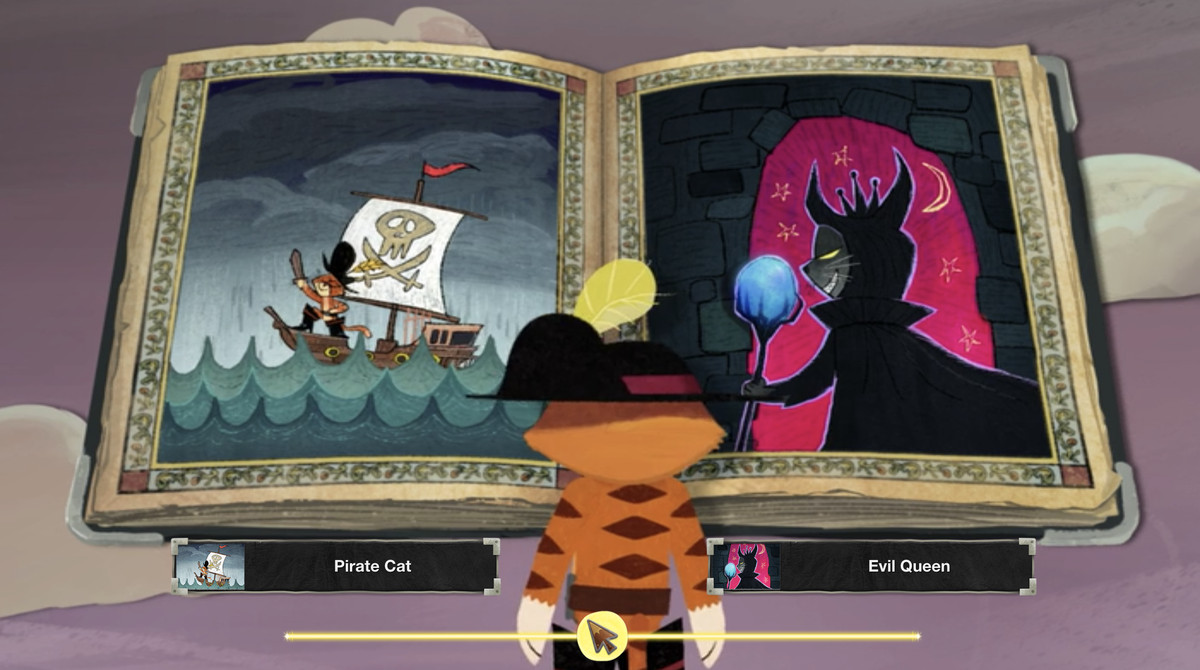
Image: Netflix
Based on the Puss in Boots animated Netflix series (which spun off from the Shrek movie franchise), Puss in Book: Trapped in an Epic Tale tosses the swashbuckling feline hero into a magical book where a cheeky narrator intends to keep him trapped so he can play out the events of various fairy tales. Viewers are prompted to pick which stories to play out (a Sinbad-style pirate tale or a Snow White homage, for instance) and then control smaller choices within the story.
Puss in Books, overall, offers some branching and different endings. You can pick which fairytales to play out, and you can break out of the book in a few different ways. But the best part of the Puss in Boots interactive special is the tone. It repeatedly breaks the fourth wall with more gusto than Black Mirror: Bandersnatch’s sly references. Puss begs the viewer to make certain choices, while the narrator delights in torturing him, and getting the audience to participate as well. In one branch, Puss realizes how to gain control of the narrative, prompting some genuinely hilarious moments as he wildly forces former opponents to sing and dance.
7. Stretch Armstrong: The Breakout
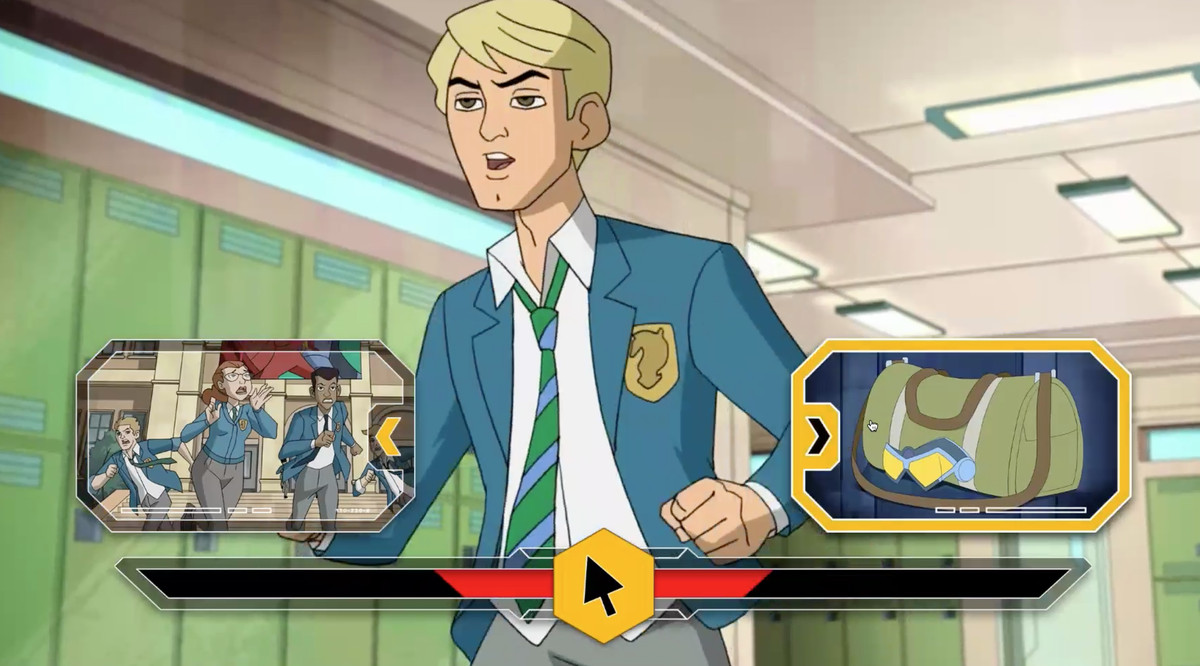
Image: Netflix
Stretch Armstrong: The Breakout follows the Flex Fighters, three high-school students with superpowered suits, right after their high-tech billionaire mentor turned on them and framed them as criminals. After a mass breakout of villains, the Flex Fighters must save the city and stop the real villain.
Coming into this game without heavy knowledge of the show puts viewers at a disadvantage, initially, but after just a few clicks, the story makes more sense. Much like with the Carmen Sandiego game, The Breakout tends to respond to “wrong” choices by pivoting you back to the “correct” one. But unlike the Carmen Sandiego or Kimmy Schmidt special, fewer of those wrong choices end in insta-failure. While some of the choices are inconsequential, there are enough to offer distinct branches with specific consequences. Choosing to follow lumbering villain Multi-Farious means taking down a high-tech skyscraper, while getting Multi-Farious to follow the Flex Fighters means a different battle against an electric-powered bad guy. There are actually different ways things can unfold — with only a few frustrating game-overs.
6. Johnny Test’s Ultimate Meatloaf Quest
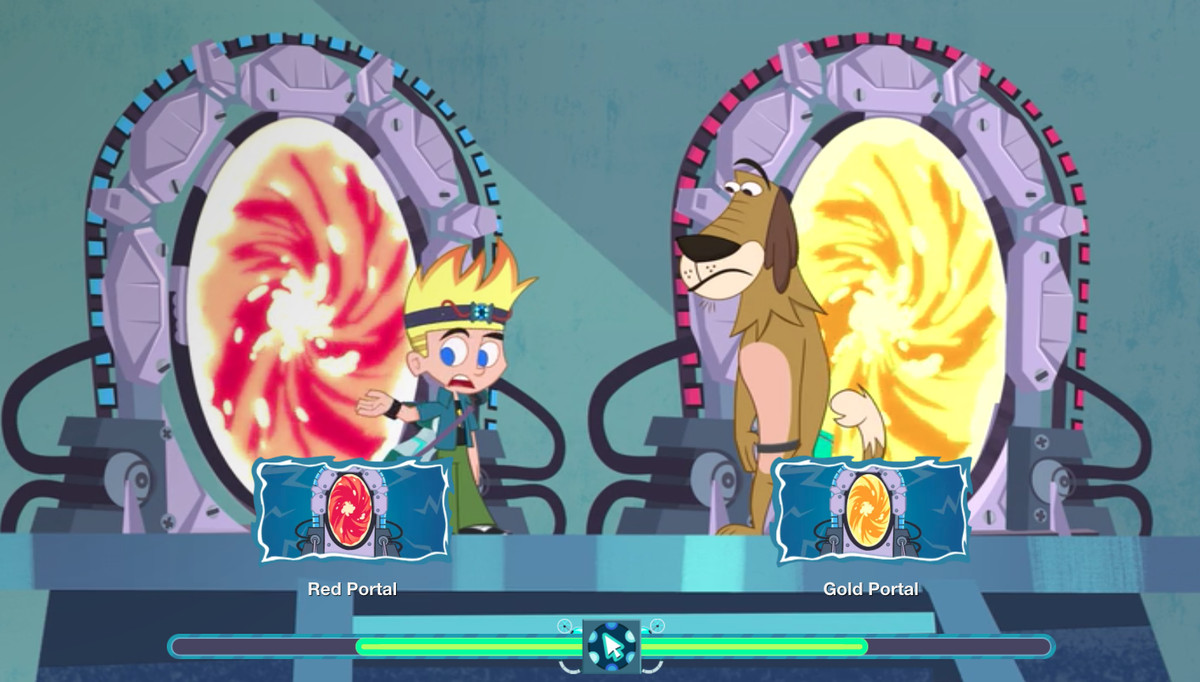
Image: Netflix
Playing through the Johnny Test interactive adventure, I got five completely different endings before I hit a repeat. That’s particularly notable, considering that a lot of the previous titles only offer alternative paths to pretty uniform endings.
Johnny Test’s Ultimate Meatloaf Quest is a spinoff of the popular Cartoon Network show Johnny Test, where a hyperactive boy named Johnny plays test subject for his genius older sisters’ various science experiments. In the Netflix Interactive, viewers take control of Johnny as he navigates through different realities in order to find one that has a perfect meatloaf, so he and his genius sisters aren’t doomed to eat their dad’s horrible meatloaf for dinner.
The first real choice (besides the tutorial to show off the mechanics) takes a page from The Matrix, by prompting Johnny and his dog Dukey to enter either a blue portal or a red one. Those are basically the two different story branches — one lands you in a world where dogs keep people as pets, and the other in a reality full of monsters. Players may eventually have the option to check out the other path, depending on their later choices. It’s all pretty goofy, but with a title like Ultimate Meatloaf Quest, that fits pretty well.
The order you choose the portals in affects the ultimate ending, and so do smaller choices within the branches. Ultimate Meatloaf Quest has one of the most complex decision trees in Netflix Interactives so far, plus a cutesy, entertaining little fourth-wall-breaking element, as Johnny’s sisters realize that someone out there is manipulating his decisions. There aren’t any early endgames, either!
5. Boss Baby: Get That Baby!
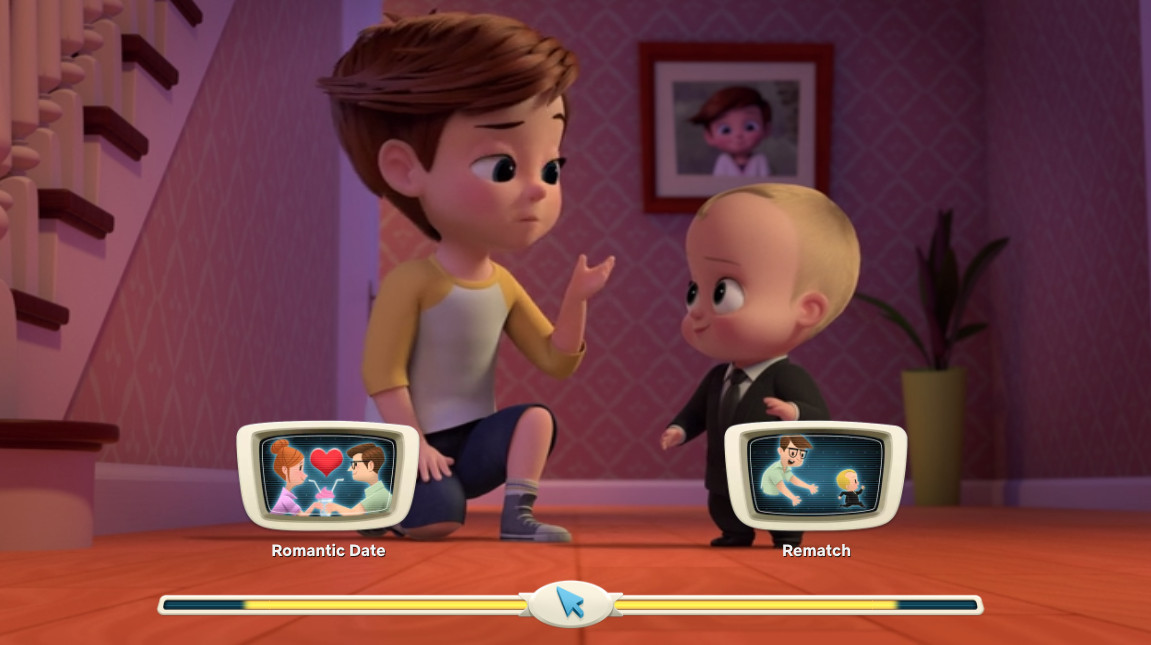
Image: DreamWorks
Who would’ve thought that the Boss Baby interactive special would crack the top 5? But every one of these specials could learn a thing or two from Boss Baby: Get That Baby. It’s not that the special has more branching paths than some of the others — it’s that it’s that the presentation itself makes some early endgames actually enjoyable.
The entire setup of the Boss Baby interactive special is that it is a training simulation, designed to see which department at Baby Corp makes the most sense for the player. That means even early endgames feel like successes. Three villains in the Boss Baby universe are also out for revenge, and you must guide the Boss Baby and his older brother to foil their schemes. No matter which villain’s scheme you pick, the characters start out in a hay bale maze. Winning or losing the maze means that the next sequence of events unfolds differently. There are clear choices with ramifications. There are also some puzzles to solve, some of which are pretty hard for what I assume is the young, target demographic!
Overall, Get that Baby! one of the more engaging interactive specials, with endings that never felt like premature pitfalls and some surprisingly funny riffs about corporate culture.
4. Barbie: Epic Road Trip
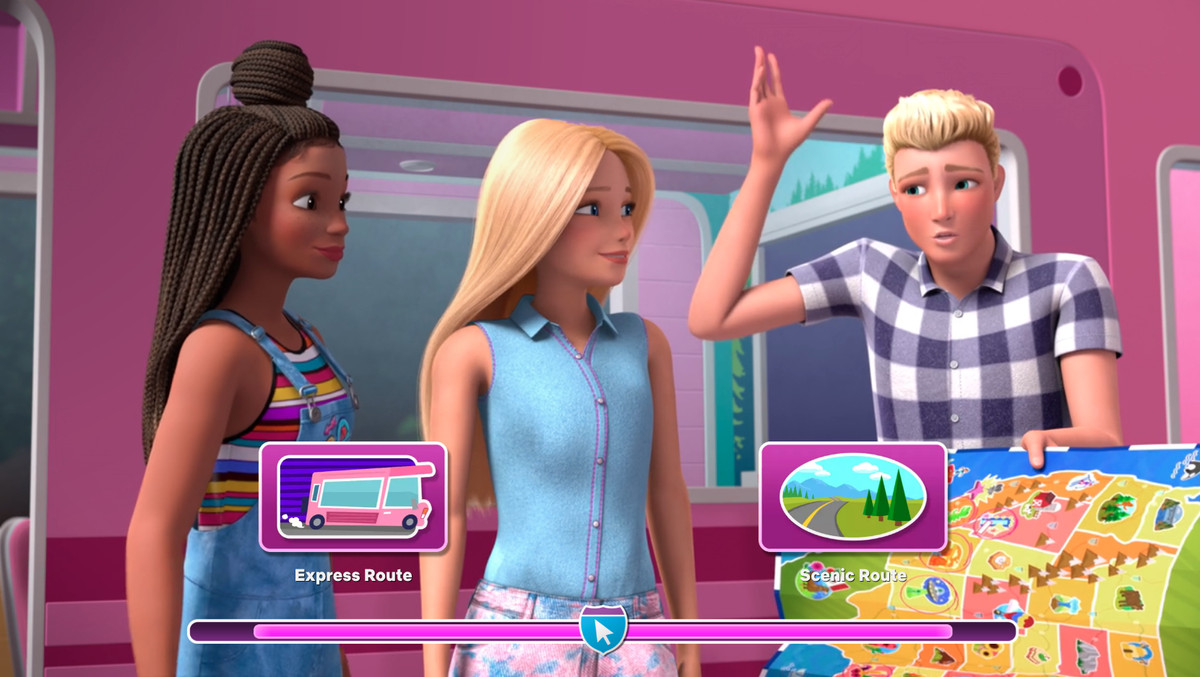
Image: Netflix
Much like Barbie herself, the interactive special has a lot going on. Barbie is going on a road trip with her sister and her best friends, Ken and another girl named Barbie Roberts. (The two Barbies were roomies their freshman year of college.) Barbie is simultaneously trying to spend some time with her family and Ken, help her younger sister Skipper launch a dog-adoption app, and also kickstart her music career with other-Barbie.
There’s a lot of interactivity in this 3D-animated Barbie special — should Barbie follow her ambitious dreams, or spend time with the people she loves? Does she pursue a relationship with Ken, or her music career? Will she help Skipper adopt out all the dogs, or book it to New York for a dream audition?
The choices you make do actually affect the route Barbie and her travel companions take, which can lead to different endings, depending on what Barbie prioritizes. Depending on what you decide, the dogs find different homes, and decisions you make early on can determine whether Barbie and the gang unlock other scenes down the line.
While the intended audience here is probably young girls, this interactive is actually a really fun take on the famous fashion doll. It digs deep into Barbie’s life, especially since this is a younger version of the ambitious, worldly heroine. Is it really possible for her to do all the things she dreams of, or will she lose the people she loves if she mindlessly pursues her goals? There are some funny and fourth-wall-breaking moments, too, as well as some endearing character moments.
3. Escape the Undertaker
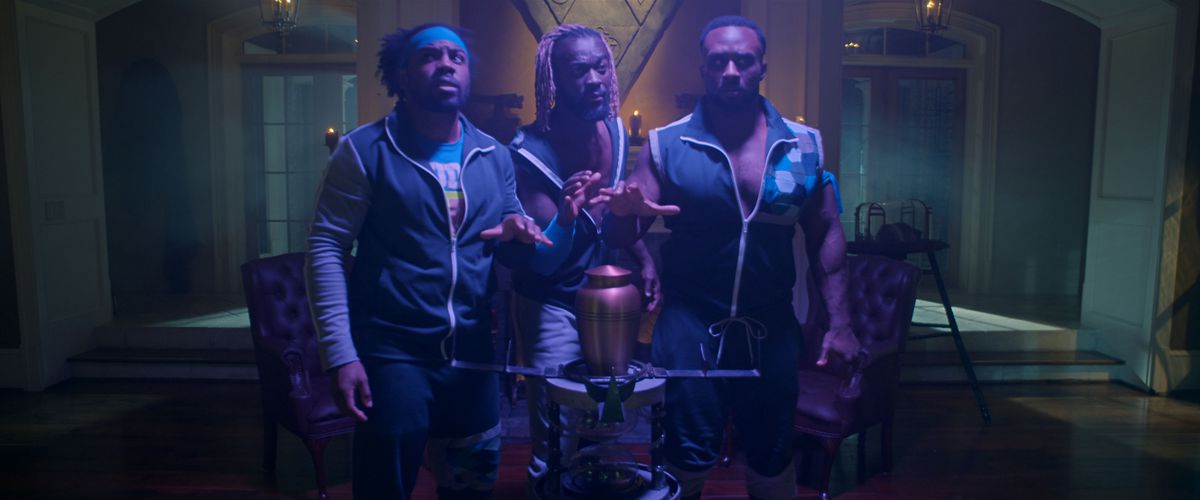
Image: Netflix
Not only are there multiple different endgames in Netflix’s crossover project with World Wrestling Entertainment, those endgames are actually affected by viewer choices. This makes Escape the Undertaker one of the most robust Netflix interactives yet. For one thing, user decisions don’t lead to dead ends — instead, they offer different points of view for how the story pans out. Escape the Undertaker is less about making “correct” choices, and more about exploration. The story follows three wrestlers who trek to a spooky mansion to steal the powerful Urn from wrestler Mark William Calaway, aka The Undertaker. (In WWE lore, it’s what gives him his powers.) Early on, users are prompted to pick one of the three wrestlers to follow over the others, which allows for different explorations of the mansion and the creepy artifacts Undertaker stores within.
The paths themselves aren’t wildly different, and the story still progresses in a pretty linear fashion, save for the exact order of exploration in a few areas. But still, the diverging branches make this one of the best interactives thus far. It’s also just absurd fun! The acting is stilted and cheesy, but when you’re trying to steal a soul-sucking urn from a retired Halloween-themed wrestler, there is no such thing as subtlety. It’s ridiculous, and it’s honestly just fun to see the different branches, because the early emphasis is on discovery, not passing or failing.
2. Black Mirror: Bandersnatch
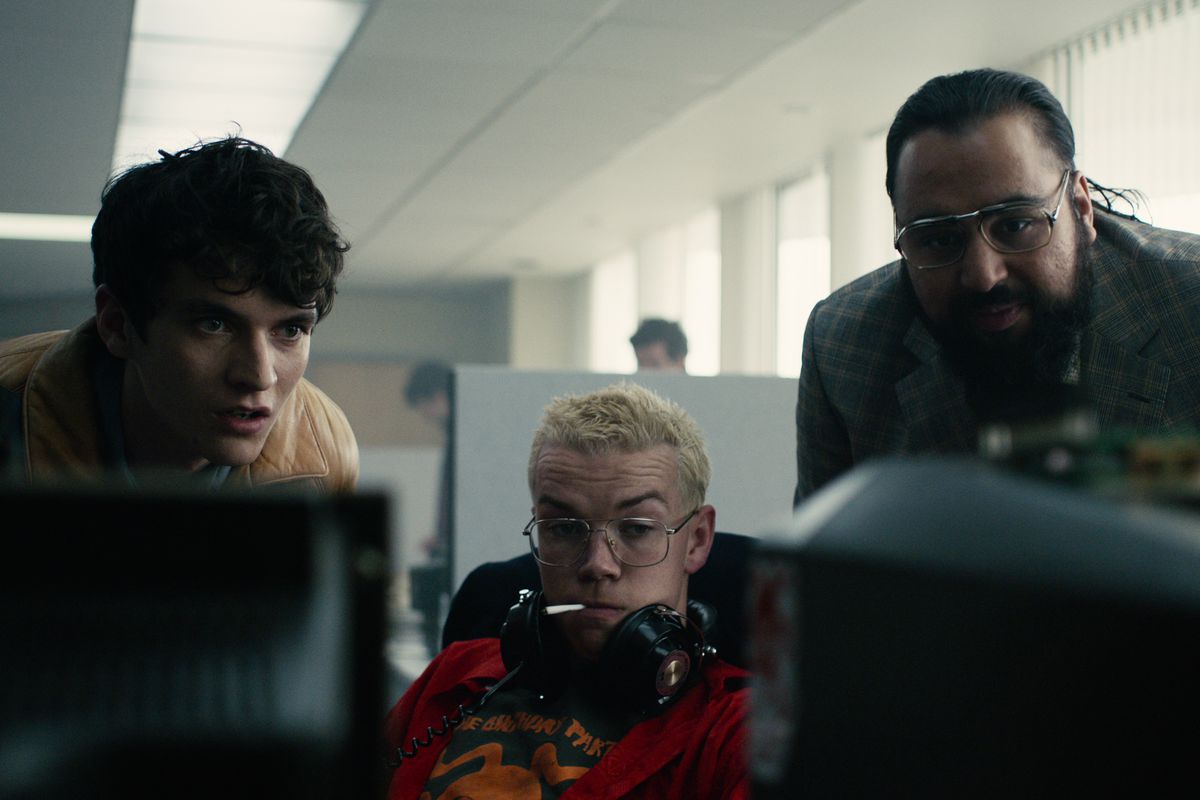
Image: Netflix
The standalone, Emmy-winning episode of Black Mirror follows a young game designer set on creating an interactive game. Meta, right? Unlike Puss in Books’ approach to joyously interrogating the fourth wall, Bandersnatch does it darkly, fueled by paranoia and drugs, and commenting more on the illusion of free will than the actual nature of the medium. But we wouldn’t expect anything less from Black Mirror.
Many choices in Bandersnatch are inconsequential, but there are enough big ones to sharply pivot the narrative. There are also multiple different significant endings, which is rare for a Netflix interactive experience. Bandersnatch doesn’t have a “good” ending — all of them are terrible for the protagonist to some degree, which makes it a grim experience. But it’s a more intricate one than some of the other specials.
1. Minecraft: Story Mode
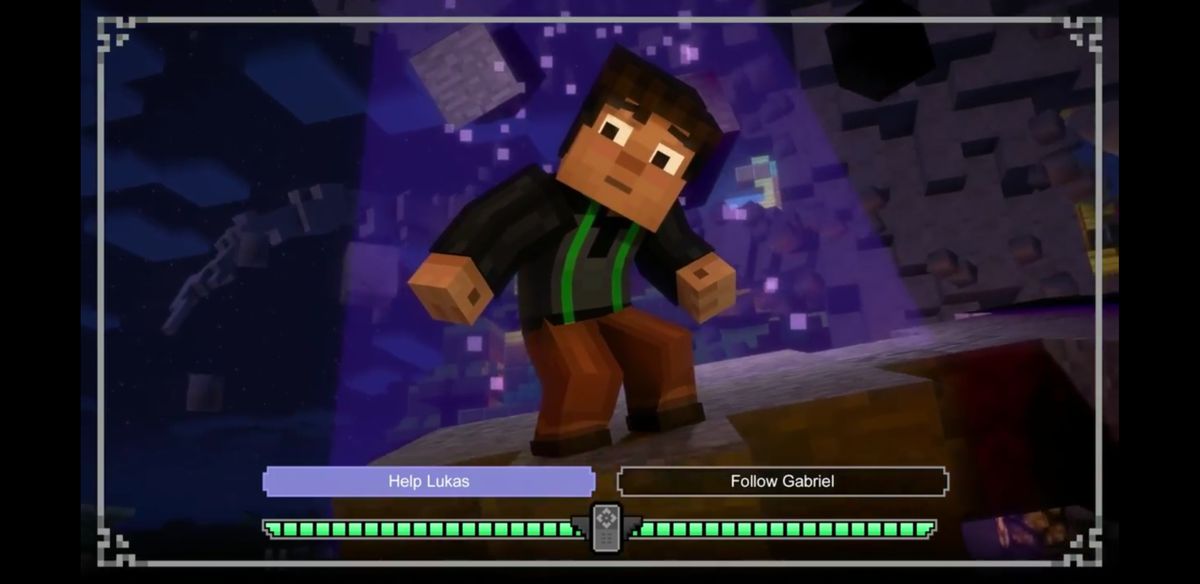
Image: Netflix
Minecraft: Story Mode is the only one of Netflix’s choose-your-own-adventure stories so far that actually plays like a game and not an interactive video. Perhaps that’s not a surprise, given that it’s a partnership between Netflix and Telltale Games, and it’s based on a game. Does that make it inherently better? It sure makes it feel more interactive, like you’re actually participating in the story. You aren’t just guiding characters to a choice — you are in the Minecraft universe.
From the get-go, Story Mode viewers are prompted to pick between two versions of the main character, which gives the story a more game-like feel. The choices come frequently, and while not all of them drastically branch off into separate narratives, they customize the actual experience of the gameplay. Your character can be nice to rivals, a bit of a jerk, or somewhere in between. Sometimes there are puzzle sequences to solve. Not every choice significantly affects the story, but they all feel like they’re expanding the experience. It’s closer to being a visual novel than any of the other titles.
Also, Minecraft: Story Mode is more robust and long, running at five nearly hourlong episodes with multiple parts. (Most of these other titles, especially the ones for kids, clock in at just over half an hour.) It’s a meaty game to dig into, especially for Minecraft fans, and definitely the Netflix interactive experience that actually feels the most interactive.

